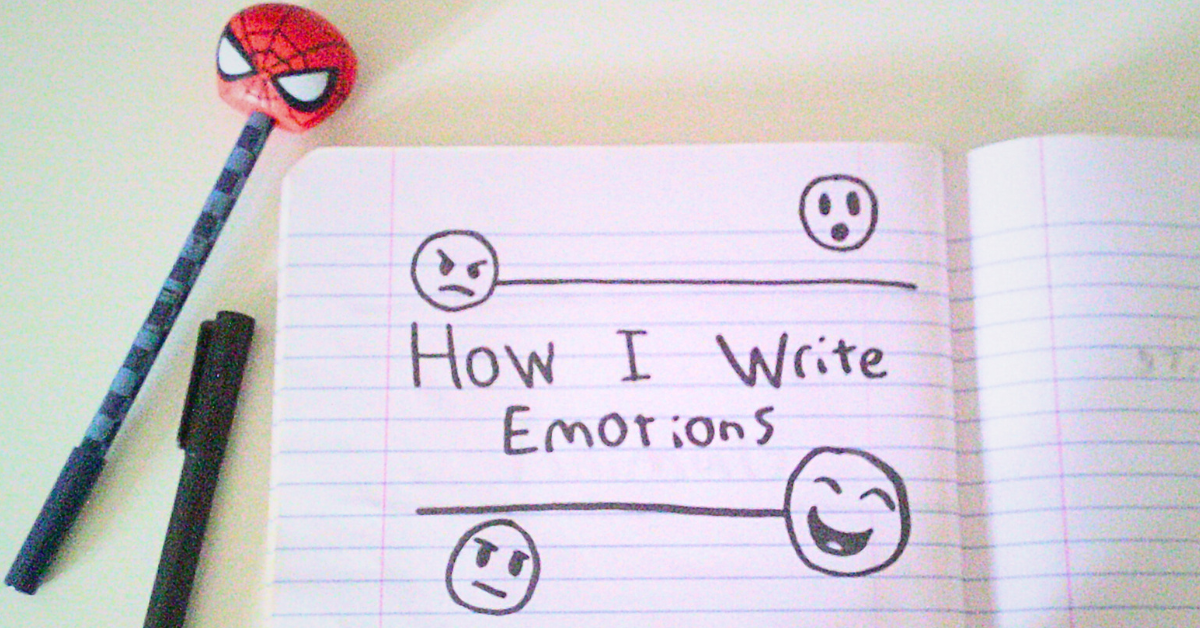Intro
If there’s one thing that can make a story feel more realistic, it’s the emotions of the characters. You can write the craziest, most ridiculous story, but, if you can make your characters’ emotions feel real, chances are that the story itself will feel more real too.
You might be skeptical, but think about it: The best stories are the ones that make you feel something. Those are almost always the ones that feel the most realistic, regardless of how close to reality they really are. And, a lot of the time, what we’re feeling is based on what the characters are feeling. Maybe we’re feeling what they’re feeling, or maybe not; the point is, it’s making us feel something. And the more convincing the characters’ emotions are, the more powerful these effects can be.
So, yeah, emotions are important. But they can also be tricky to write well, because they’re so easy to overdo and underdo. I think a lot of people kind of get hung up on this—I know I definitely used to. So, if you’re here looking for advice on how to write emotions, my first tip is this: Don’t overthink it. Like everything, writing emotions takes practice, and you can’t practice if you can’t get the words on the page.
There are a few things that I try to keep at the back of my mind when I’m writing emotions, and these are what I’m going to be sharing with you. So let’s get to it.
Everyone Expresses Emotions Differently
This is something that can be easy to overlook, but it’s super important for making your characters’ emotions feel more real. Just because two characters are feeling the same thing doesn’t necessarily mean they’ll express it the same way.
Like, say two characters are sad. One might be very obvious about it, crying and seeking out comfort. Another might be super quiet and withdrawn, actively avoiding social interactions. Neither one is necessarily more upset than the other, but the ways they express their feelings are obviously very different.
Figuring out how exactly my characters express their emotions is usually one of the first things that I do when I’m creating them, because it usually has a lot to do with their overall personalities. Characters who are more quiet and reserved, for example, will probably tend to be less outwardly obvious about their emotions than characters who are more open, even if they’re feeling just as strongly. Most of the time, that’s the main way I determine it: The more generally open they are, the more obvious they are about their emotions.
That’s my general rule of thumb. But not all characters are that predictable, and even characters who are usually pretty predictable can still sometimes surprise us, depending on the situation at hand and the intensity of their emotions. Maybe the character who usually seems very laid back and reserved suddenly seems a whole lot less so when they’re super excited about something, or maybe the character who’s generally very open about everything totally locks down when they’re upset. These sorts of things depend very much on the given character and their current situation and mindset, so it’s really important to get into the character’s head for any sort of emotional scene.
How I Determine How Much Emotion is “Enough”
Whenever I’m writing emotional scenes, I always try to pay attention to how intense the characters’ emotions seem, and whether that intensity seems appropriate for them and the situation at hand.
In most cases, a scene where a character is reunited with a lost companion should probably be more emotional than a scene where that same character loses their favorite sword or something. (I mean, unless they were super attached to that sword, of course.) While this might seem obvious, I’ve seen several writers—myself included—make scenes more or less dramatic than they seem like they should be, so it can be an easy mistake to make, especially if you’re new.
The appropriate amount of emotion for a character to experience in a given situation is another thing that depends a lot on the character themself. Some characters just are more dramatic than others, so they might react more strongly to things than others. And some characters are the opposite, and might react less strongly to things than you’d expect. To make it even more complicated, a lot of how a character would react to a certain event depends on their current thoughts and state of mind when the thing happens.
It sounds like a lot to keep in mind, but it’s not quite as tricky to determine as you might think. You just have to get into the character’s head and know what sorts of things would set them off. What they care about, what they’re afraid of, those sorts of things. For example, maybe a character is usually pretty level-headed, but you know they’re super protective of their friends, so their stoic demeanor slips when one of their buddies is hurt, making them suddenly a lot more outwardly emotional. Just consider the situation at hand, how important it would be to the given character, and how that character would react to it. That’s usually enough to help me gauge how dramatic and emotional the scene should be. And, like a lot of things that have to do with writing, it kind of just becomes second nature after a while, so I rarely ever have to stop and consciously think about it.
Make It Believable
This can kind of go hand in hand with making sure that the drama levels are appropriate for the situation, but there’s more to it than just that. If you want the emotions in your story to feel natural and realistic, you have to kind of loosen up and feel those emotions yourself, at least on some level. It doesn’t necessarily have to be to the same extent as what the character is feeling, of course—a lot of the time, that just isn’t possible—but I think that it is true that someone who is feeling genuinely happy can write a more convincingly happy scene.
There are a lot of things I do to kind of give myself a taste of what my character is feeling. The simplest is, again, to just put myself in their shoes and try to see things from their perspective. A lot of the time, I can really emphasize with them by doing this, and I can use that empathy—and the shared feelings that come with it—to make their emotions feel more natural and genuine.
Another thing that I do a lot to get myself to really appreciate what my characters are feeling is listening to music that fits their mood. I pretty much always listen to music while I’m writing, and it’s great for helping set the tone—which can be very helpful for emotional scenes. I know that a lot of writers can’t write with music on, so this might not work for everyone, but it’s one of my personal favorite ways to get myself in the zone.
Outro
That’s all for today’s post. I hope you found this interesting—and that you’ll check back later this month for the new book recommendation post. Thank you for reading!












